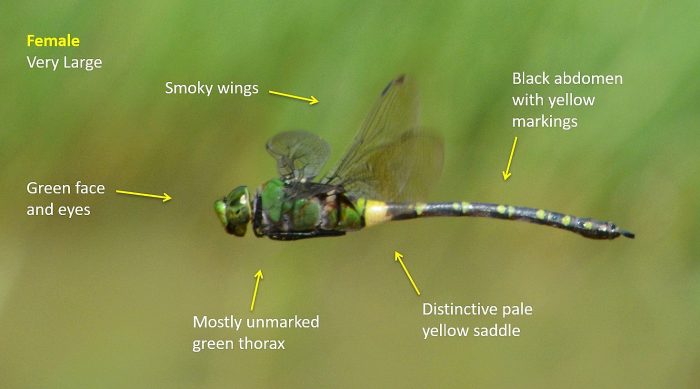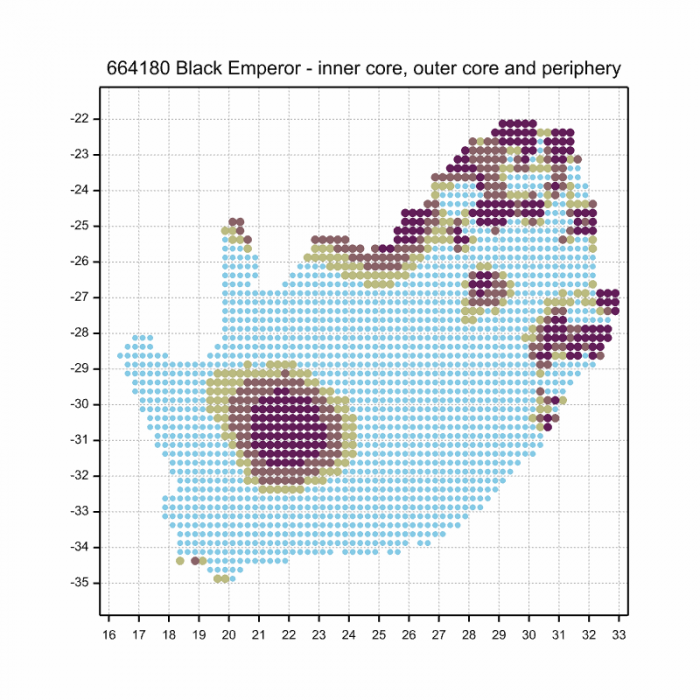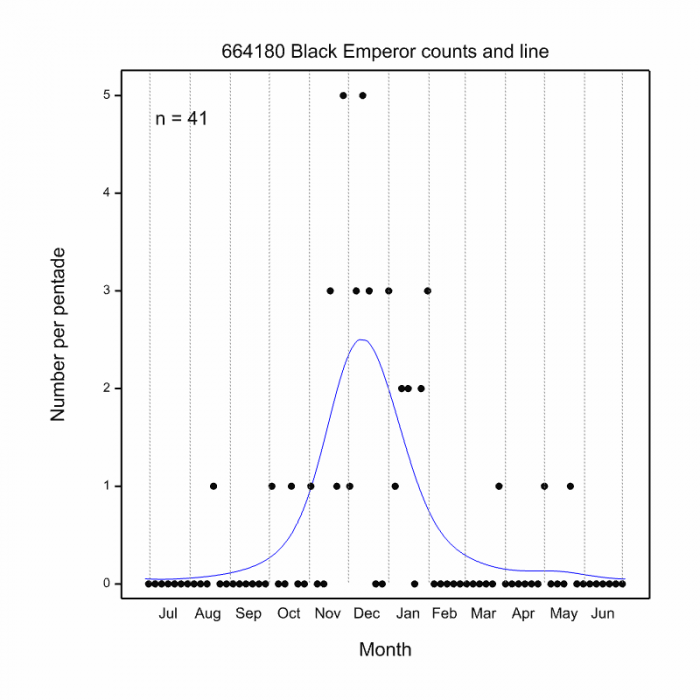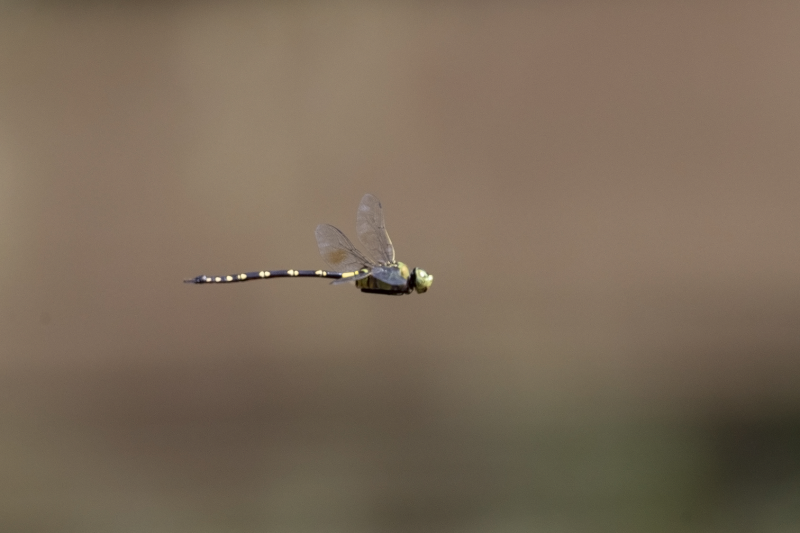View the above photo record (by Niall Perrins) in OdonataMAP here.
Find the Black Emperor in the FBIS database (Freshwater Biodiversity Information System) here.
Family Aeshnidae
Anax tristis – BLACK EMPEROR
Identification
Very large to huge size
Length up to 116mm; Wingspan attains 133mm.
This is the largest dragonfly species in Africa. The distinctive green, black and yellow colouration added to its huge size render Anax tristis unmistakable.
The sexes are very similar but females have shorter and broader abdomens. Females also have smoky-coloured wings.
Click here for more details on identification.

Near Hluhluwe, KwaZulu-Natal
Photo by Ryan Tippett
Habitat
Frequents Pans, dams, ponds and waterholes in savanna areas. Sometimes also found at marshes and rivers. Prefers fairly small, open waterbodies, often with minimal vegetation.

Bonamanzi Game Reserve, KwaZulu-Natal
Photo by Ryan Tippett
Behaviour
Highly aerial and seldom seen perched. The flight is very fast and powerful. Flies at tree-top level and also low over the water. Patrols a regular route over a waterbody. The flight route often includes a trip to the surrounding treeline before returning to the water at speed. Fairly inquisitive and will sometimes pass an observer at close range. If disturbed it flies fast, high and far. Rests by hanging vertically from a perch. Preys on large flying insects, including beetles and other dragonfly species.
Most active from October to April (see Phenology below).
Status and Conservation
Anax tristis is a scarce and localised species. It is listed as of Least Concern in the IUCN Red List of Threatened Species. Mostly found in undisturbed areas but does make use of suitable man-made dams and waterholes.
Distribution
Widely but thinly distributed throughout most of sub-Saharan Africa. Only absent from the driest regions of NE Africa and the arid regions of Namibia and South Africa.
Below is a map showing the distribution of records for Black Emperor in the OdonataMAP database as at February 2020.

The next map below is an imputed map, produced by an interpolation algorithm, which attempts to generate a full distribution map from the partial information in the map above. This map will be improved by the submission of records to the OdonataMAP section of the Virtual Museum.


Ultimately, we will produce a series of maps for all the odonata species in the region. The current algorithm is a new algorithm. The objective is mainly to produce “smoothed” maps that could go into a field guide for odonata. This basic version of the algorithm (as mapped above) does not make use of “explanatory variables” (e.g. altitude, terrain roughness, presence of freshwater — we will be producing maps that take these variables into account soon). Currently, it only makes use of the OdonataMAP records for the species being mapped, as well as all the other records of all other species. The basic maps are “optimistic” and will generally show ranges to be larger than what they probably are.
These maps use the data in the OdonataMAP section of the Virtual Museum, and also the database assembled by the previous JRS funded project, which was led by Professor Michael Samways and Dr KD Dijkstra.
Phenology



